Can you put bleach in a dishwasher or will it damage something? Let’s find out!
As unnerving as it sounds, your dishwasher can be the main source of bacteria growth, mold, and odor in your house. But there is no need to be ashamed of it because it’s a natural byproduct of regular dishwasher use, but that doesn’t mean you shouldn’t do anything about it.
On the contrary, for your and your family’s health, it’s best to regularly deep clean your dishwasher. Bleach is one method for accomplishing this.
As Covid spreads, using bleach can also be a way to disinfect your dishes after a family get-together or holiday feast.
If your dishwasher smells, there is usually a build-up of food particles trapped in it, while simultaneously clogging the filter and growing rapidly enough to cause some upset stomachs. An always damp, never dried and deep cleaned dishwasher can easily smell funny because of growing fungi and mold, or a clogged drain.
If your dishes come out icky and there is a distinctive, lingering smell, first check the filter and the trap. Clean them out, and run a sanitizing cycle that is way hotter and longer than a regular dishwashing cycle. If the problem is still present, get down for some reading on how to deep clean your dishwasher and dishes as well as using bleach.
There are two ways to clean it with bleach. Either way, you should manually clean out the gunk first, so the bleach can do the disinfecting properly. One way is to spray around with a bottle and hand clean it. The other way is to run a cycle with bleach in the dishwasher.
Can you put bleach in a dishwasher?
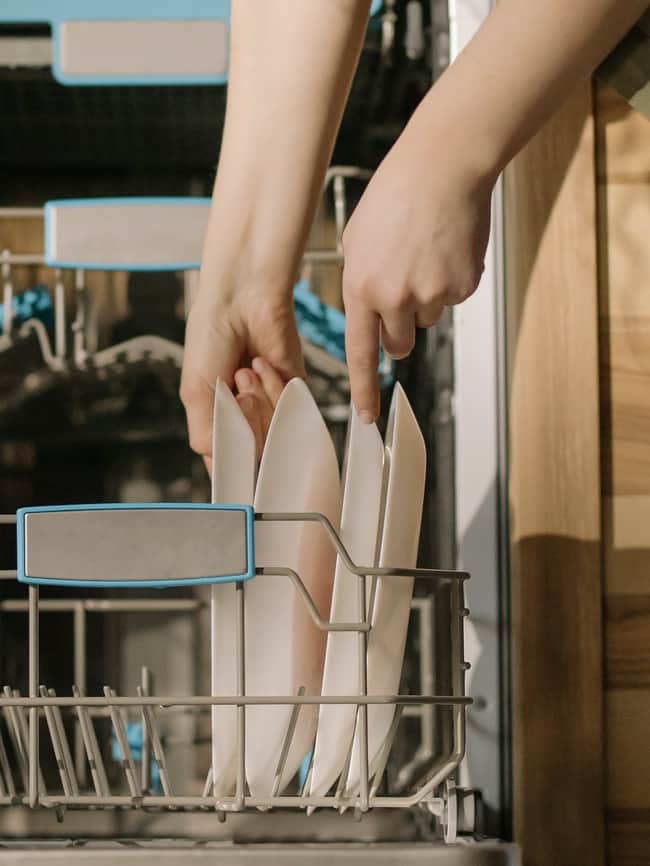
Putting bleach in your dishwasher can be a great way to disinfect and get rid of germs, bacteria, viruses, mildew, insects, mold, fungi, and any gunky remains.
Doing it safely is critical because bleach can be extremely harmful to your skin, eyes, and lungs if you breathe it in.
When deep cleaning the dishwasher with bleach, always use both dishwasher and bleach-safe containers.
Your entire dishwasher has to be plastic or bleach-friendly because bleach will ruin, corrode, damage, and discolor heavily any stainless steel parts in your dishwasher. If you’re unsure, check the manual for safety.
To deep clean the dishwasher, simply put half a cup of bleach into it after any gunk has been removed and the filter has been cleaned.
Run a full cycle, except for a drying cycle. Make sure that the bleach is washed out properly. If unsure, run another cycle.
What will the bleach do?
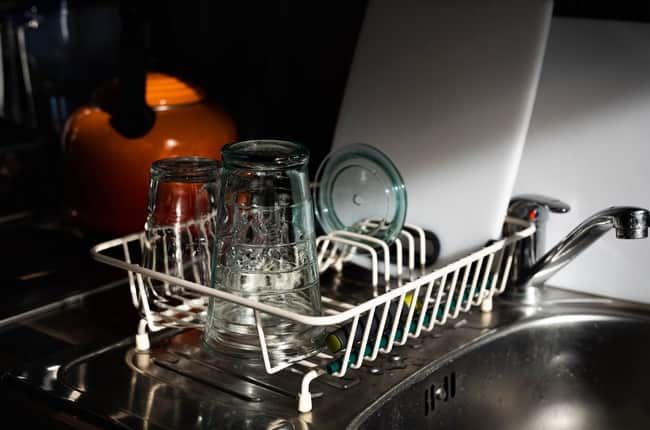
Bleach is an extremely powerful cleaning detergent. It cleans out the mold, gunk, fungi, germs, bacteria, remaining food particles, bad odors, and any layers of sticky mildew.
A dishwasher is a perfect place for any remaining food particles to grow bacteria, germs, fungus, and mold inside the cleaning utensil in a warm and damp environment. These all lead to unclean and hazardous dishes and unpleasant smells.
Bleach is not a miracle cure, you have to deep clean at least every 6 months, but favorably more frequently, and also clean the filter and drain at least weekly.
You should regularly clean the racks as well. Bleach and hot water inside your dishwasher with a high-pressure water spray eliminate the food particles sticking to the inside surfaces.
Can bleach damage my dishwasher?
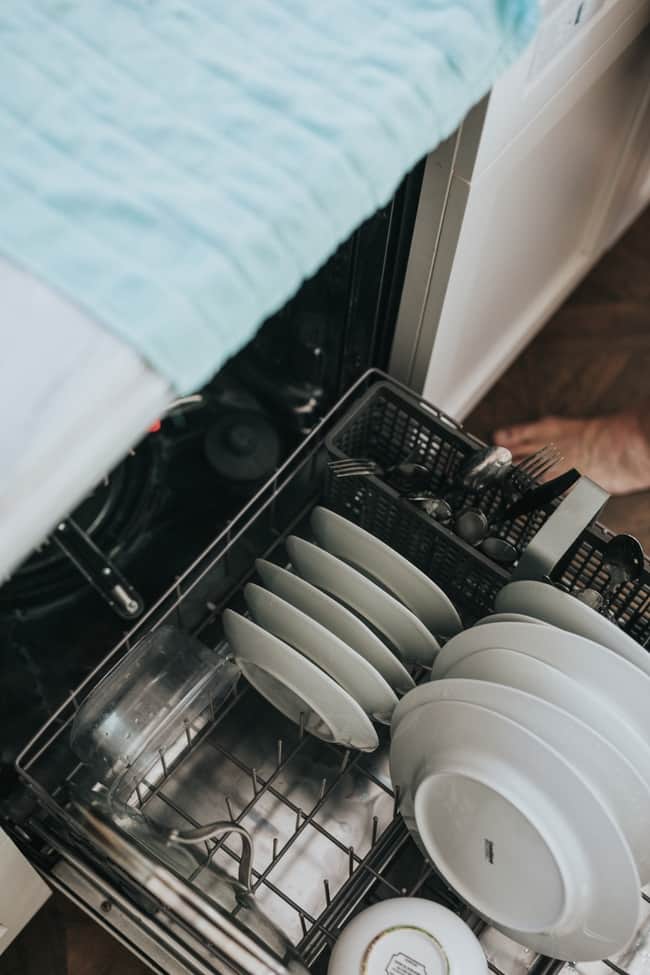
Bleach is generally safe to use in any plastic dishwasher, or in the ones labeled as bleach-safe. You can always check the owner’s manual to make sure you won’t damage your dishwasher while deep cleaning it.
Never use bleach in stainless steel dishwashers or in plastic dishwashers with stainless steel parts in them, because the bleach can heavily damage them.
The only exception is if the owner’s manual states that the dishwasher is bleach-safe. Otherwise, it will severely corrode and damage your utensil.
For stainless steel, dishwashers go with dishwasher detergents, vinegar, or baking soda. When cleaning stainless steel utensils, never leave cleaning residue on them because it dulls the surface and leaves nasty stains. It can also break down rubber seals around the door in the long run.
Bleach may not be harmful to your dishwasher, but if you are still unsure dilute it with 1 tbsp bleach to 1 cup of water. Some materials can’t withstand high levels of bleach such as fabrics, cellulose, sponge, wood, organic materials, natural materials.
Part of the reason it’s such an effective cleaning detergent is that it doesn’t leave behind any harmful bacteria or germs.
Usually, bleach is not recommended for regular cleaning and dishwashing, only for deep cleaning every once in a while, such as monthly.
How to clean a dishwasher with bleach?
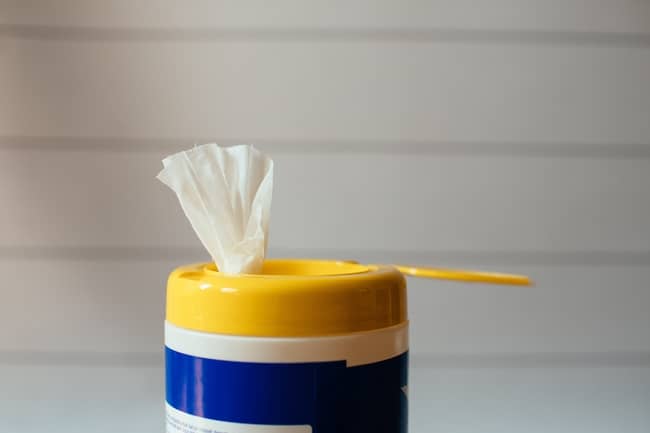
You can either clean the dishwasher manually with bleach or run a cycle with a cup of bleach in it.
A dishwasher’s normal cycle is between 130-150°F and dissolves food particles with high-pressure water squirts and detergent.
After the dishes are clean from the detergent and high-pressure water spraying, the dishwasher rinses them at 180°F to remove any potentially harmful detergent residue.
You must exercise caution if you prefer to clean the dishwasher by hand with bleach. Wear cleaning gloves at all times, shield your eyes, and don’t breathe it in. Remove the racks and manually clean and drain the filters.
Then, spar the racks and insides of the dishwasher with a spray bottle filled with bleach (you can dilute it with water if you prefer). Use a sponge to clean the larger areas, and a toothbrush to clean the smaller ones. Clean the dishwasher thoroughly, including every nook and cranny, and then wipe it down.
To remove any remaining bleach from the inside, run it on empty.
Another method for deep cleaning your dishwasher is to place 1 cup of bleach in a dishwasher-safe bowl and place it on the top rack. Then, without drying, run a full cycle.
This can only be done in a dishwasher that is bleach-safe. Don’t forget to wipe down the doors and buttons regularly, as we touch them all the time.
The difference between clorox and bleach
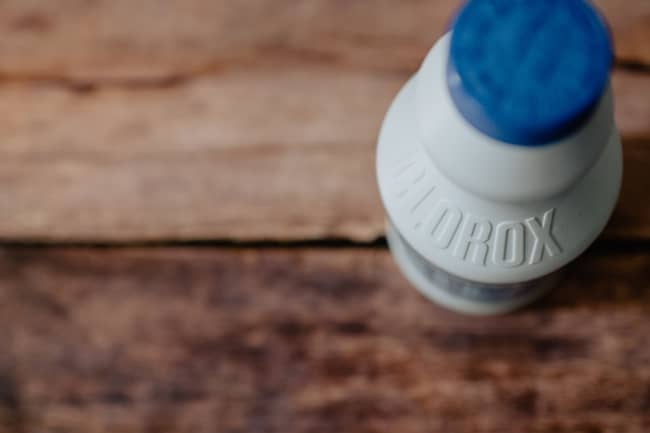
Clorox is a brand that sells a variety of cleaning products, including several types of bleach. There are several different kinds of bleach, but any regular one, including Clorox’s bleach, will deep clean your dishwasher.
Normally, regular bleach is not intended to be used on household dishwashers, but all commercial dishwashers are compatible with even heavy bleach-using, because of the bigger turnaround, and more need to be heavily disinfected.
The majority of automatic dishwasher detergents already have some bleach in them. If you have any questions about using bleach in your dishwasher, consult the owner’s manual or call the manufacturer’s hotline. They are more than happy to assist you and answer your questions about how to best use their product.
Also, we can’t emphasize this enough: always use thick rubber cleaning gloves and protect your face, eyes, and lungs from bleach when using it. If you are careless, it can cause severe damage.
5 Benefits of bleach in the dishwasher
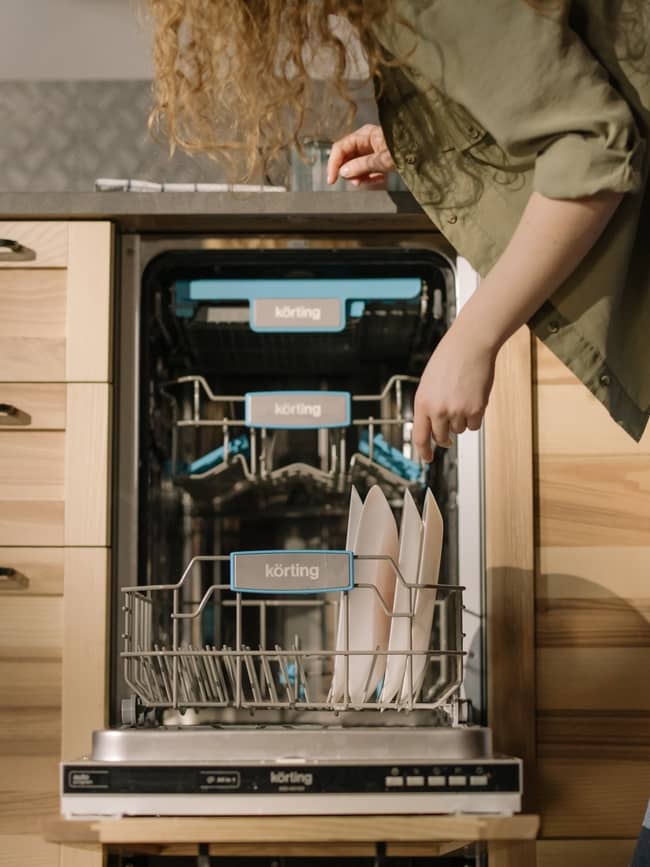
Bleach can be an extremely useful household staple for deep cleaning not only utensils but also your entire home. When using it to deep clean your dishwasher, keep in mind that many start their cleaning cycles by draining any leftover water in the utensil, sumping the bleach at the start of the cycle, and rendering it useless. Read the manual to find out how the cycle works, or spray the bleach about so it adheres to the surfaces rather than being drained instantly.
1) Eliminate bacteria and prevent food poisoning
Bacteria are a major threat, especially to your dishes. Hand washing does not always kill all germs, salmonella, and bacteria on dishes, which can stick even after being cleaned in a dishwasher. Adding bleach to your handwashing or dishwasher procedure can help you get rid of them.
Food poisoning is frequently caused by bacteria growth on eating and drinking items, insulated bottles, tumblers, reusable straws, and other difficult-to-clean items. These bacteria can taint our foods and drinks and even cause serious food poisoning with diarrhea, vomiting, and severe cramps.
2) Remove mold and gunk and fungi
According to studies, there is dangerous mold, fungi, or bacteria growth in the dishwasher at any given time in 62 percent of households. That sounds terrifying. The dishwasher’s hot, moist, damp, non-air-dried, and alkaline environment is ideal for the rapid growth of several fungi, all of which are harmful to humans.
You inhale their spores into your lungs, causing infections that are difficult to treat and, in some cases difficult to detect. When you open the dishwasher, the hot, damp air you inhale can be the beginning of fungi colonizing and spreading in your body.
Several types of black yeast also prefer areas with high salt concentrations, which is a common ingredient in dishwasher soaps to reduce calcium buildup in your dishwasher.
After reading all of this, it seems reasonable to deep clean regularly with bleach or vinegar (NEVER BOTH!). Both kill molds, bacteria, and fungi, with bleach being slightly more potent.
3) Eliminate nasty odor
Unfortunately, foul odors are common in most household dishwashers as a result of improper use, under-cleaning, or improper cleaning. This is not only an annoyance, as we discussed above with fungi growth, but it can also be extremely harmful. You do, after all, eat and drink from your dishes! That is the same as eating or drinking contaminated food.
After using the dishwasher, leave the door open to allow it to air dry. This can help to prevent the growth of mold and the development of a stale odor. Clean the bottom rack of leftover food particles regularly, and inspect the filters for dirt if necessary.
4) Prevent clogs
The remaining food particles are the main causes of clogging in the dishwasher. They block the draining after a while, leaving the dirty water to circulate in it. That doesn’t lead to clean dishes. Unclog and clean the dishwasher with bleach regularly to prevent bigger clogs and service calls.
5) Prevent pricy repairs
The keys to a long-lasting dishwasher are proper usage and regular cleaning. Food particles, clogs, buildups, and mold can all cause long-term damage to your appliance and prevent it from functioning properly.
All of this leads to costly repairs in the long run, but deep cleanings with bleach can go a long way toward preventing all of this.
Final words
Whatever cleaning method you use for your appliance, whether vinegar, baking soda, detergent, or bleach, never mix vinegar and bleach. When these two ingredients are combined, they produce potentially lethal chlorine gas when inhaled.
Bacteria, food remains, mold, and decomposing food are the most common causes of unpleasant odors. Running a hot cycle with vinegar, baking soda, or bleach can provide a thorough deep cleaning by breaking down any harmful substances. If the residue is primarily caused by soap, grease, or detergent, vinegar is a better choice. This is also true if you have a stainless steel appliance, as bleach can severely damage those parts.
You should do a regular deep cleaning every month or two, but a weekly cleaning of the drains and filters is a must too. This can prevent further clogging, and service calls, and further expensive repairs or plumbing.
Interesting articles:


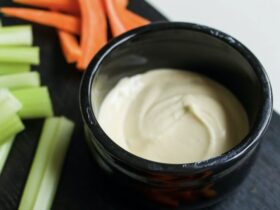

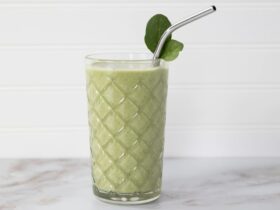
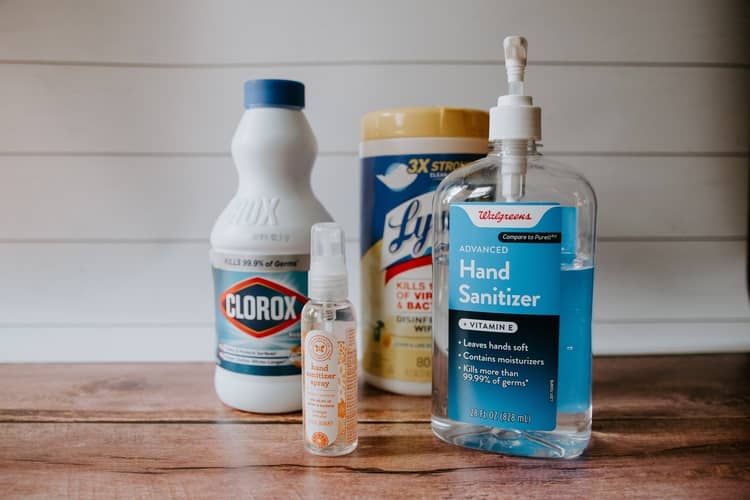






Leave a Reply